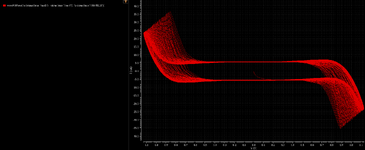jerald woo
Newbie

Hi, I'm studying about a passive rectifier.
I designed the conventional rectifier circuit by Cadence tool.
When I calculated the PCE (Power Conversion Efficiency), I only get around 60%.
(I tried to find the optimized point, So these circuit parameters are pretty optimized.)
But many papers say this conventional rectifier has almost 80% PCE at optimized point.
So I think that the input power calculating might be wrong.
Unfortunately, I didn't consider the power factor between input voltage and input current.
(I didn't consider 'cosθ' in the equation of the first figure)
Now I notice what is the missing point of my calculation, but I don't know how to calculate it by Cadence.
Cadence calculator don't have functions for AC power or power factor calculation. (second figure)
Let me know how to calculate AC power by Cadence.
Or if there are other missing points, please tell me about it.
Thank you for reading my question.


I designed the conventional rectifier circuit by Cadence tool.
When I calculated the PCE (Power Conversion Efficiency), I only get around 60%.
(I tried to find the optimized point, So these circuit parameters are pretty optimized.)
But many papers say this conventional rectifier has almost 80% PCE at optimized point.
So I think that the input power calculating might be wrong.
Unfortunately, I didn't consider the power factor between input voltage and input current.
(I didn't consider 'cosθ' in the equation of the first figure)
Now I notice what is the missing point of my calculation, but I don't know how to calculate it by Cadence.
Cadence calculator don't have functions for AC power or power factor calculation. (second figure)
Let me know how to calculate AC power by Cadence.
Or if there are other missing points, please tell me about it.
Thank you for reading my question.





